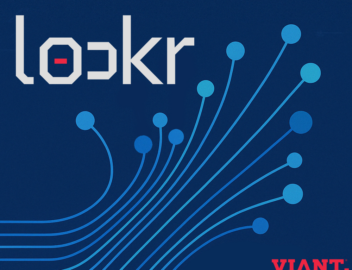

Thank you!
Just one more thing before you go...

Viant Acquires Lockr, And It’s All About Connecting IDs
By James Hercher – AdExchanger
Viant announced that it acquired Lockr, a consumer and business service for managing email inboxes and data opt-ins, during its Q4 earnings call on Monday. The goal is to connect the identity Lockr gets from its publisher tech with Viant’s identity graph.
The company reported fast growth in its TV-focused DSP business in Q4, earning $90 million total in Q4 and $289 million for all of 2024, good enough for 40% and 30% year-over-year growth respectively. Viant’s net income more than doubled from Q4 2023, though it remains narrowly profitable at $7.7 million in Q4 2024.
Terms of the Lockr deal were not disclosed.
Open your Lockr
The Lockr acquisition was asked about by multiple investors. Though the analyst group was lukewarm on the deal. And Viant’s stock dipped 12% in after-hours trading.
Laura Martin, Needham’s tech and media equity analyst, asked for more detail because she “doesn’t understand the logic.” After all, she pressed, why would a publisher give their data directly to a DSP?
“There is a lot of friction in matching the Viant Household ID with publisher identity,” said Viant co-founder and CO Chris Vanderhook. The company’s proprietary identity graph uses the household rather than individual users as the atomic unit, but that can be difficult to reconcile to addressable individuals through the maze of data vendors, clean room services and alternative IDs.
Publishers may not use Viant as their first-party data vendor, because the DSP represents the interest of the advertiser, he responded. “We need to enable them to use their first-party data in advertising.”
Most importantly for the deal is that Lockr will help accelerate adoption of Viant’s own ID solutions in programmatic buys, co-founder and CEO Tim Vanderhook said later in the call. The Viant Household ID and the IRIS ID (from acquiring IRIS.TV) will both be easier to use in the bidstream, he said. All the other programmatic identifiers that integrate with Lockr, like the Unified ID 2.0 and Yahoo’s Connect ID, will be available as well.
It’s the second relatively small acquisition Viant has made in the past few months, after closing on IRIS.TV last November.
And both Lockr and IRIS.TV are alike, in that each counts publishers and content creators as customers. They are sell-side technologies and are part of Viant’s Direct Access product, which leapfrogs the SSP by going straight to publishers.
The financials
One mystery that’s been hanging over the programmatic ecosystem since The Trade Desk reported earnings three weeks ago is why some companies reported persistent dampened demand and low CPMs in November and December, while others, such as Viant, seemed relatively unaffected.
How could that be?
“You can go down the line” of ad tech companies that have reported Q4 earnings and determine which are most heavily exposed to open web display inventory, Chris Vanderhook said.
“That’s our best bet,” Tim added. Viant’s business indexes highly to CTV, where CPMs and spend were not depressed, he said. His view is that the ad downturn that hit others wasn’t due to macroeconomics or the election, so much as poor CPMs in display inventory that relies on faulty cookie-based, last-touch attribution.
Although Viant’s numbers outperformed their programmatic competitive set, Viant can’t escape the category. The share prices are still more than 20% since TTD reported its earnings last month, and investors reset the whole category at a lower plateau.
View the original article in AdExchanger.

Machine-Generated Email Cost Calculator
Unlock additional revenue by integrating with Identity lockr.
Select your industry vertical.
How many registered users or newsletter subscribers do you have?
Average monthly emails sent to each subscriber per month?
What is your average email open rate?Optional
What is your average email click rate?Optional
Has lockr previously analyzed the machine-generated emails in your first-party data?
What was the percentage?
Enter your RPM (page revenue per 1,000 sessions).
What is your average monthly subscriber growth rate?
What is your anonymous web visitors monthly pageview traffic?
What is your authenticated monthly pageview traffic?
Projected Incremental Revenue
Projected Annual MGE Overhead
| MGE Fees | $0 |
| MGE Lost Email Revenue | $0 |
| MGE Advertising Leakage | $0 |
| One month of Email Jail | $0 |
| Incremental Revenue | $0.0M |
Enter your email to receive the full report.
Are you sure you want to leave?
Changes you made will not be saved.







